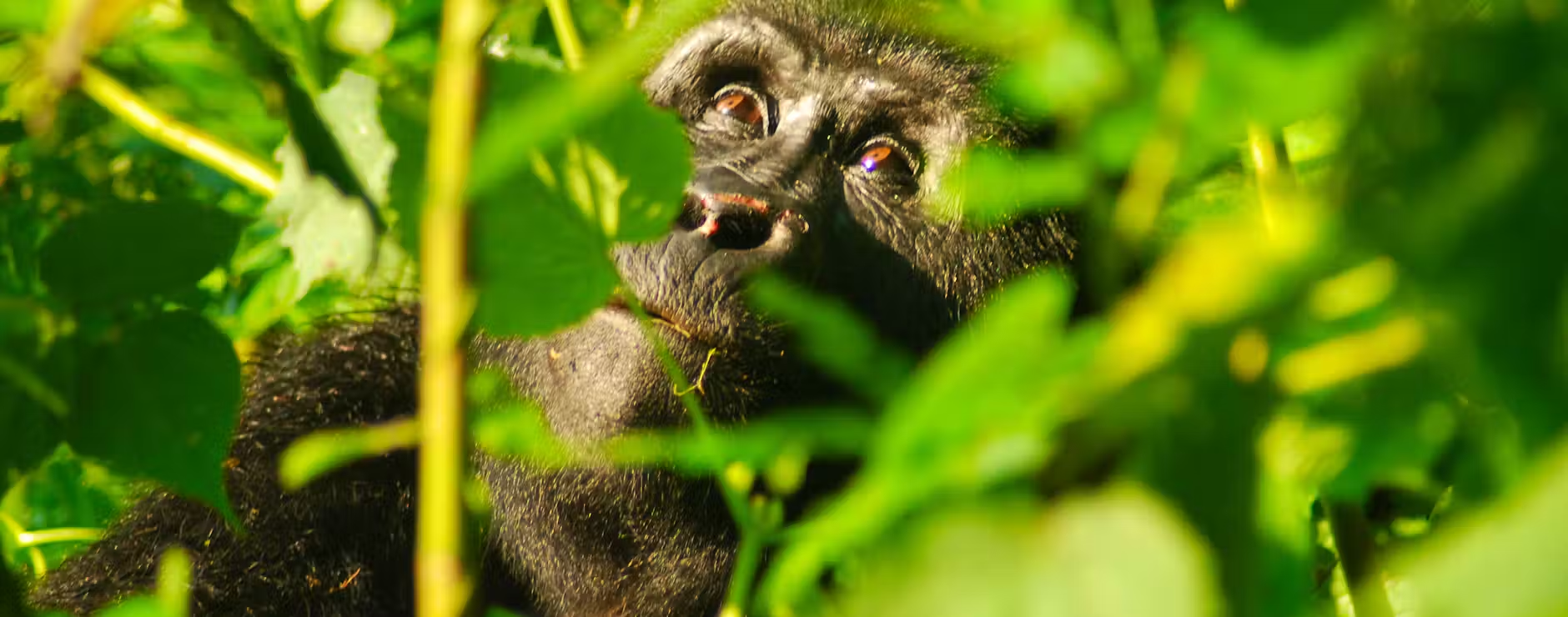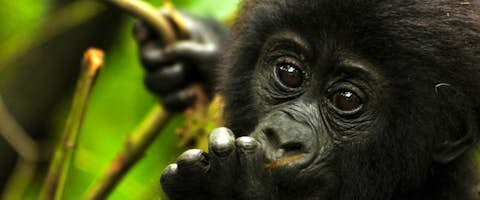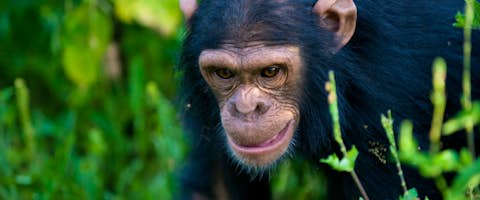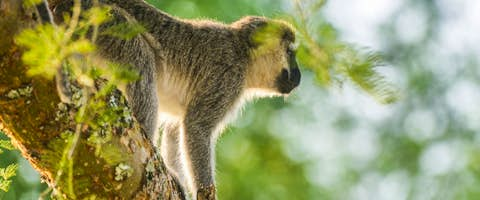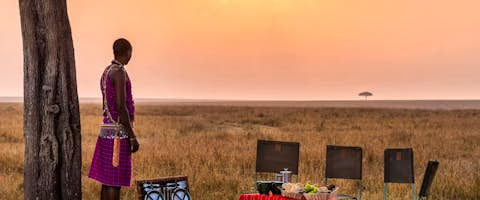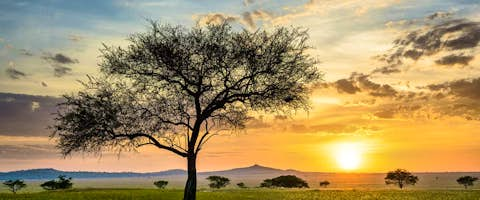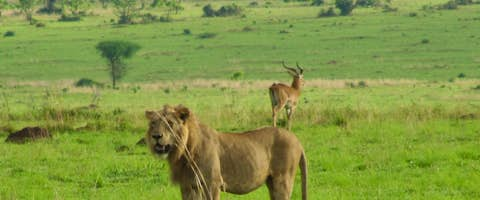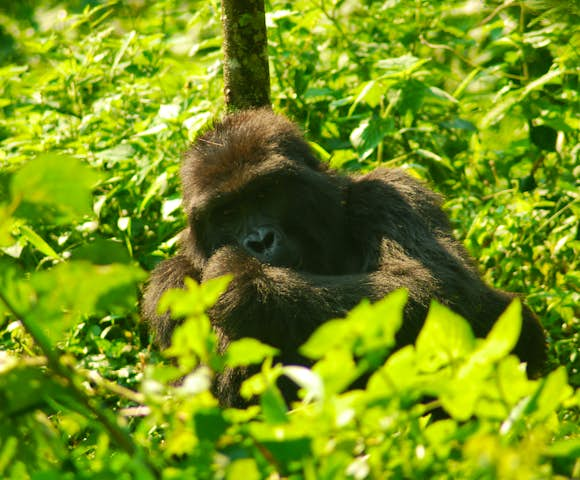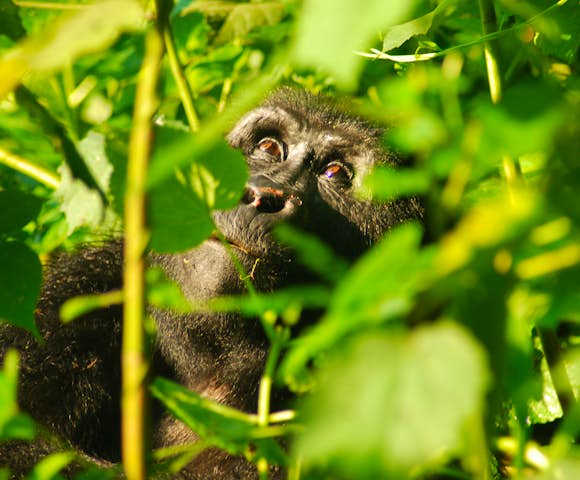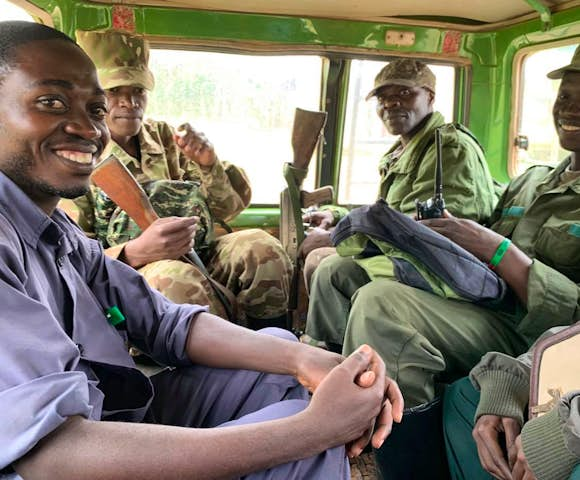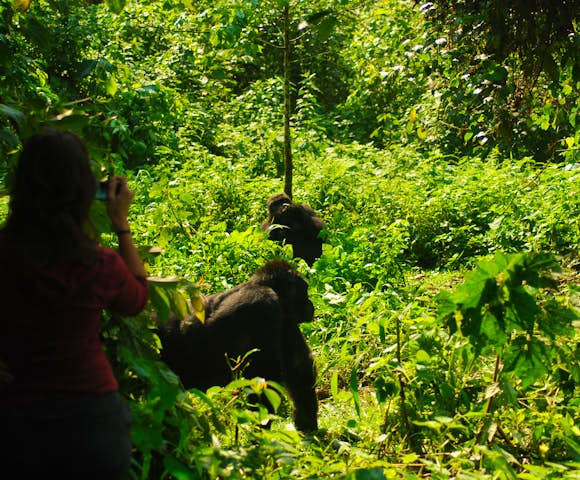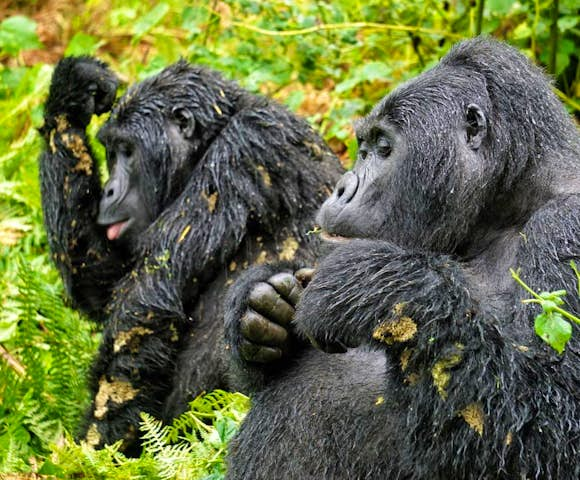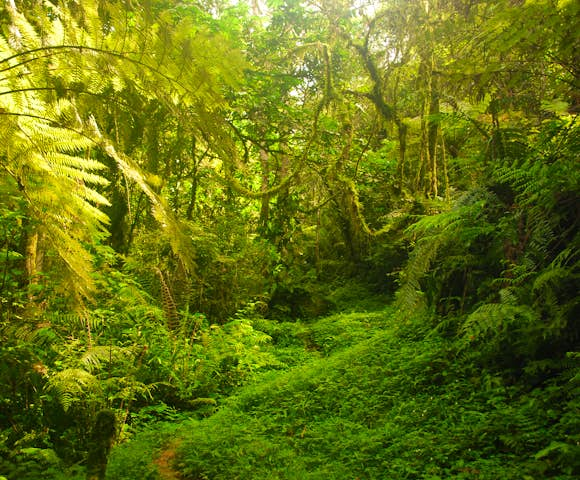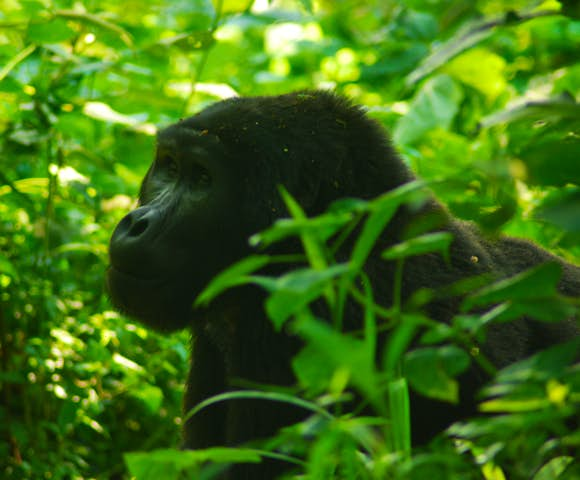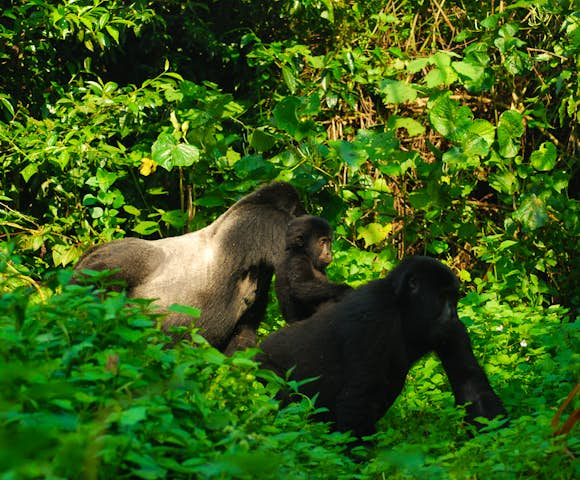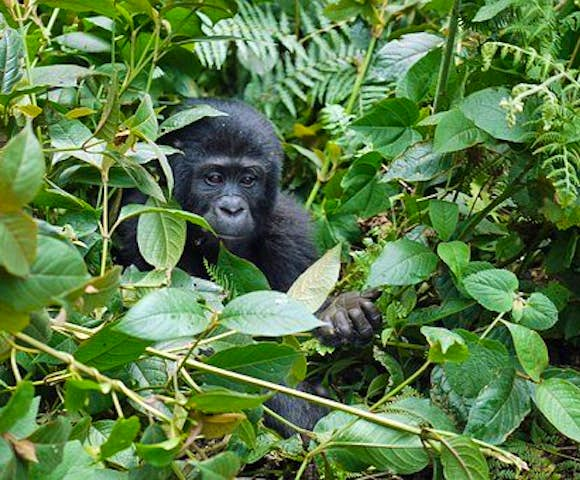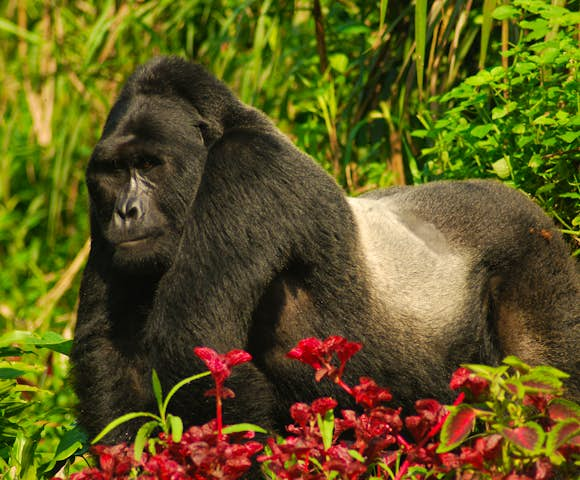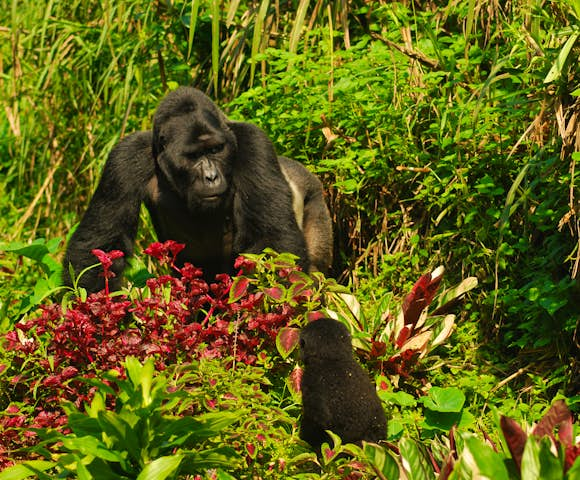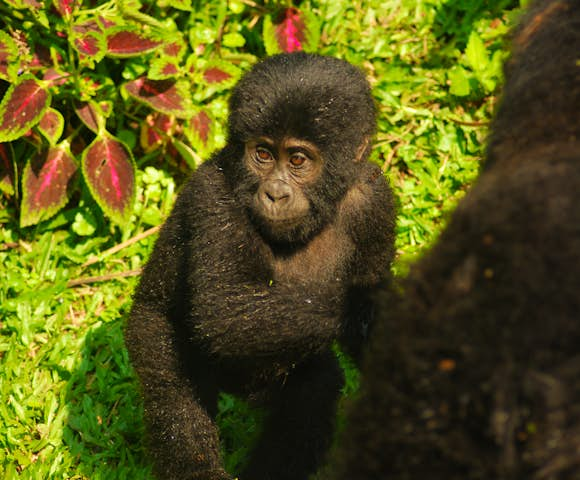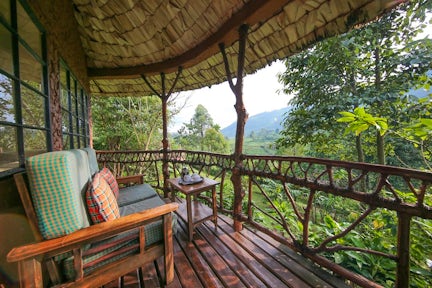Ultimate Guide to the Gorilla Habituation Experience
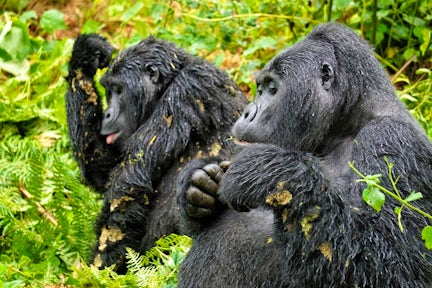
Gorilla permits drop in price during the low season.
Include Gorilla Habituation on these trips
The tours below showcase just some of what is possible. Use these itineraries as starting points, or to draw inspiration. Then get in touch, and let our expert team help craft the perfect itinerary for you.

Brilliant says
The habituation trek is noticeably more difficult than a standard gorilla trek. Particularly important are gloves, boots, gators, durable and waterproof pants/trousers and jackets. You need a good level of fitness, agility, and flexibility. You'll be jumping streams, climbing steep, mossy slopes, and ducking and diving away from foliage in all directions.
Habituating the Mountain Gorillas of Uganda
Uganda is home to approximately half of the world's endangered mountain gorilla population, and gorilla trekking in Uganda is one of the most incredible wildlife experiences on the continent.
Standard gorilla treks give you the chance to spend up to one hour in the company of the gorillas in their natural habitat. This has been made possible by gently introducing the gorillas to human presence, a process that takes between 2 and 5 years. This is essential for the continued research, care and conservation of the gorillas.
For those wishing to take a more active role in the protection and understanding of these gentle giants, you can join the rangers and conservationists in the habituation process of two more gorilla families in the Bwindi Impenetrable Forest.
During a habituation trek, you can spend up to 4 magical hours with these highly intelligent and emotional animals.
It is an incredibly humbling experience, and the habituation process is fundamental to the continued protection of the gorillas.
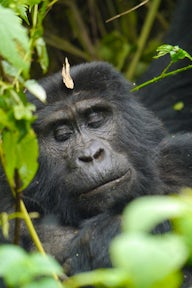
Gorilla Trekking vs Gorilla Habituation Experience
A standard gorilla trek in Uganda involves hiking through dense forests in search of habituated gorilla families, and then spending up to an hour observing the group.
By contrast, the gorilla habituation experience involves spending four hours with a group of gorillas and is only available in the Rushaga sector in the southern part of Bwindi Impenetrable National Park.
A standard gorilla trekking permit costs $700, while the gorilla habituation experience costs $1,500 at the time of writing.
The gorillas observed during the habituation experience are less used to humans than those seen on the standard gorilla treks (they are still being ‘habituated’). The experience is still completely safe, and the benefit of spending more time with gorillas is that you can better understand their behaviours and social dynamics, as well as get incredible photographs, without being rushed.

A gorilla in Bwindi, relaxing in the sun

Brilliant says
Arranging permits, finding the right accommodation for your trekking route, and organising travel to and from can be a complicated process. Let Brilliant take care of that for you, so all you have to do is get excited about your once in a lifetime adventure.
A Typical Day on a Gorilla Habituation Trek
The first part of any gorilla excursion in Uganda is a (sometimes lengthy)trek into the forest with an expert team of guides and scouts, looking for tracks left by the gorillas.
The strongest clue that you're near a group is finding the gorilla's 'nest' from the previous night. It can take up to 6 hours or more to locate a gorilla family.
Once contact is made, you can spend up to 4 hours with the gorillas. A habituation experience gives you an insight into the lives of these amazing animals that few get to experience.
It's important to be aware that for us humans with short attention spans, 4 hours can be a long time, so you'll want to be sure the habituation experience is right for you.
As you observe the animals up close, interacting with each other in their small familial groups, you'll start to draw parallels between the gorillas and us - the similarities are often striking, and humbling.
It's a full day affair, and returning to the lodge for dinner and a warm shower/bath will be much needed and well deserved!
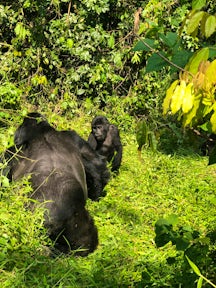
Bwindi Gorilla Tours
When is the best time to go?
The gorilla habituation experience can be done year-round. Temperatures in Bwindi hover between 20 and 25 degrees Celsius throughout the year. The two dry seasons, from June to August and again from December to February, are the best times to visit - but you should be prepared for showers at any time of year.
The months of March to May typically see the most rains in Bwindi, so where possible you should avoid these months. Although seeing the gorillas during the wet season offers some advantages for photographers. The rain clears the air of dust, making for clearer photos, and the rain and mist combines to create a certain moody, wilderness look-and-feel of the national park - particularly compelling from your lodge veranda!
Photos
Where will your adventure take you?
What to Pack
- Waterproof hiking boots with good ankle support and grip (to avoid any nasty blisters, ensure you have good walking socks and have worn them in before you depart).
- Light, breathable, waterproof jackets and trousers, and long-sleeved shirts. Wearing long sleeves and trousers will protect you from insect bites and keep you warm if the weather turns.
- Hat and sunglasses.
- A lightweight backpack, with enough room for lunch, reusable water bottle, extra layers, snacks and some essentials like sun cream, insect repellent, after-sun, bite relief cream and lip balm.
- Binoculars, so you can spot other wildlife such as birds and monkeys from a distance.
- Camera with spare batteries and waterproof covering.
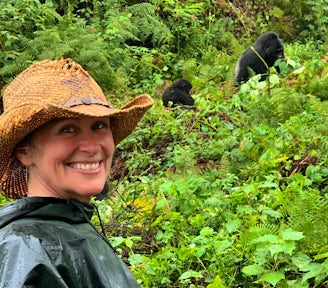
Where to stay
There are some fantastic accommodation options close to Bwindi where you can enjoy fabulous views of the mountains from locally-run lodges with traditional architecture.
On the more luxurious end of the spectrum, you have Volcanoes Bwindi Lodge and Clouds Mountain Gorilla Lodge. These lodges blend high-end modern amenities with elegant yet unshowy wood and stone architecture. Sanctuary Gorilla Forest Camp is another popular favourite.
Some less luxurious, but cheaper and still very good options include Buhoma Lodge, and Mahogany Springs Safari Lodge.
How to get to Bwindi Impenetrable National Park
Bwindi National Park is in the south-west of Uganda, and is fairly accessible by road or by air.
After arriving in Entebbe International Airport in central Uganda, you can take a second flight to either Kisoro or Kihihi airstrips, both of which are located close to Bwindi. The flights run daily and take about 1.5 hours.
Alternatively, the national park can be reached by car from Entebbe in around 9 hours. Although this is a longer option, it is possible to break up the journey with visits to other amazing destinations like Queen Elizabeth National Park - an excellent safari spot - and Murchison Falls National Park that is cut by the Nile river.
Stories from the trails
Kevin's Habituation Experience
The habituation experience only takes place at Rushaga on the Kisoro side of the park. The starting point for the habituation trek is different from the standard gorilla treks (even if you're doing a standard trek in Rushaga).
We had to be at the trailhead for 7am, so it was a very early start. The route you take through the forest depends on where the gorillas were the day before. You can either go via a road that leads into the forest, or through farms and tea plantations along the forest edge.
When we get to the forest, you can see why they call it Impenetrable. There are no existing routes or trails, and our rangers had to cut through extremely dense forest to make progress. Slow-going, but immensely exciting. The rangers explained to us that they're looking for the gorilla's nests from the night before. These guys know the gorillas better than anyone on the planet, to the point where they can identify where each individual in the family slept from the size of the nests, and can find silver hairs that have dropped off the silverback.
Once the team located the nests, it takes around an hour to find them. We were tracking a family called Bikingi, and they were definitely more nervous around humans. There are 14 members in the family in total, with 2 silverbacks. If you got within 10 metres or so, many of them would move away, and we had a couple of 'mock charges' from the dominant silverback.
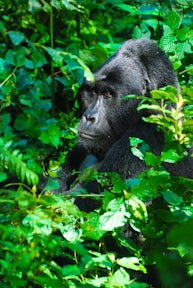
All told we spent around 3 hours with the gorillas, which was plenty of time. They say you spend 4 hours with them, but that clock starts once they locate the nests, not when they locate the gorillas themselves. It didn't matter, though - 3 hours was more than enough time.
For us, the most exciting part is forging our way through the thick forest, and actually locating the gorillas - learning about how the rangers can identify their tracks, find their nests, and ultimately find them every time.
If you're looking for the best photo opportunities, then you'd probably be better off doing two standard gorilla treks over 2 days. Reason being so much of the habituation experience is about actually locating the gorillas, that's really what makes the experience different to a standard trek.
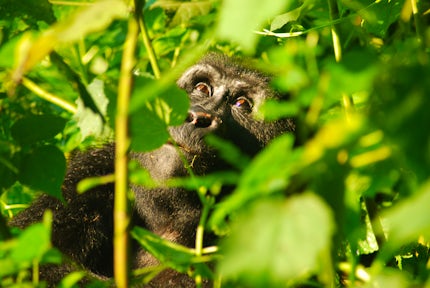
Adult Gorilla photographed by the habituation team.
Gorilla Habituation Experience FAQs
-
What is gorilla habituation?
Gorilla habituation is the process of gently introducing wild Mountain Gorillas to the sight and presence of humans for research, care and conservation purposes. Visitors are now able to take part in this process via gorilla habituation experience.
-
What is the difference between gorilla tracking and gorilla habituation?
The main differences between a standard gorilla trek and the habituation experience are time and cost. A standard gorilla tracking permit costs $700, and you can spend up to one hour observing the gorillas, while a habituation permit costs $1500, and you can spend up to 4 hours with the gorillas.
Disclaimer: prices listed are at time of writing, and could be different at time of booking.
-
How much is a gorilla habituation permit?
A gorilla habituation permit in Uganda costs $1500 at time of writing
-
Why is gorilla habituation so expensive?
Gorilla habituation is expensive because of the $1500 permits required to trek the gorillas. Gorilla trekking and gorilla habituation is the primary revenue source for the continued protection and conservation of the Mountain Gorillas. Approximately 75% of the permit cost is used in conservation initiatives to protect the gorillas.
-
How many gorilla habituation permits are available?
There are eight permits available for the gorilla habituation experience each day. The eight permits are divided into two groups of 4, one group for each gorilla family. It is advised that you book far in advance if you would like to include a habituation experience as part of your itinerary.
-
Where can I do the gorilla habituation experience?
The only place you can take part in a gorilla habituation experience is in Rushaga sector of Bwindi Impenetrable Forest in Uganda.
-
Is the gorilla habituation experience safe?
Yes. The gorilla habituation experience is safe; you will be accompanied by experienced and knowledgable guides and rangers who will ensure your safety. You are also required to keep a safe distance of 6-8 meters away.
-
Do I need to be fit to do the gorilla habituation experience?
A moderate level of fitness is required for the gorilla habituation experience as treks to the gorillas involve steep, rocky, slippery paths at high altitudes. Depending on where the gorillas are on the day, the hike can take between 1 and 6 hours.
-
Is there an age restriction on the gorilla habituation experience?
Yes, there is an age restriction. You must be 15 years or older to take part in the gorilla habituation experience and gorilla trekking.
-
Will I be allowed to take photographs during the gorilla habituation experience?
Yes, you are allowed to take photographs during the gorilla habituation experience. However, flash photography is strictly prohibited. A DSLR camera is recommended, as there may be low light underneath the canopy of the trees.
Brilliant Africa - 2024 Season
Include Gorilla Habituation on these trips
The tours below showcase just some of what is possible. Use these itineraries as starting points, or to draw inspiration. Then get in touch, and let our expert team help craft the perfect itinerary for you.
Ready to plan your African adventure?
Listen
We'll spend some time listening to your aspirations, then discuss the kind of experience that might suit you.
Match
Next we'll discuss the options, shortlist the best trips for you and present you our impartial recommendations.
Reserve
We'll place a 24 hour hold on your preferred option - without obligation - whilst we talk through the details.
Whatever your budget, group size, length of stay, preferred activity or appetite for adventure, we can help.
+1 315 645 2889

